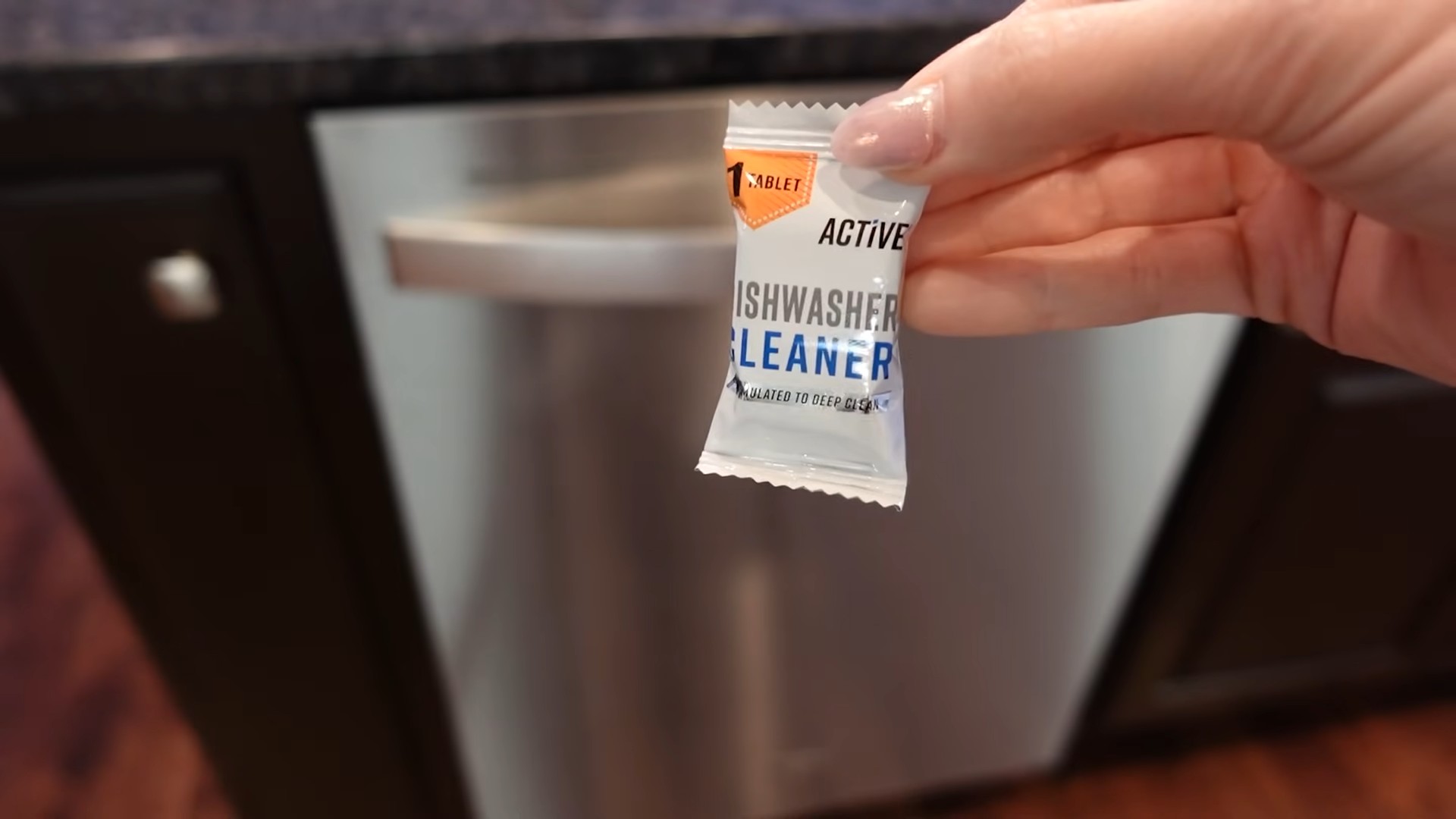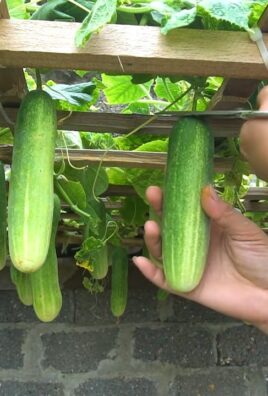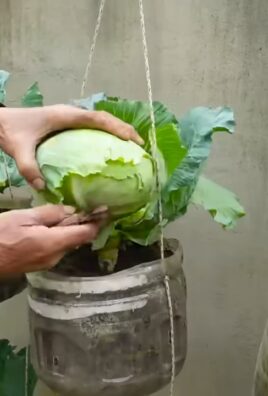Growing Eggplants at Home can seem daunting, but trust me, with a few clever tricks and a little DIY spirit, you can be harvesting your own delicious, glossy eggplants in no time! Forget those bland, overpriced eggplants at the grocery store. Imagine stepping out into your backyard and picking a perfectly ripe eggplant, ready to be transformed into a mouthwatering baba ghanoush or a hearty eggplant parmesan.
Eggplants have a rich history, dating back thousands of years to ancient Asia. They were initially cultivated for medicinal purposes before becoming a culinary staple. From the vibrant markets of India to the sun-drenched fields of Italy, eggplants have been cherished for their unique flavor and versatility.
But why bother with the effort of growing your own? Well, for starters, homegrown eggplants taste infinitely better! Plus, you have complete control over what goes into them – no harmful pesticides or chemicals. And let’s be honest, there’s something incredibly satisfying about nurturing a plant from seed to table. This DIY guide is packed with simple, effective techniques to help you succeed, even if you’re a complete beginner. I’ll share my favorite hacks for maximizing your yield, protecting your plants from pests, and ensuring you’re growing eggplants at home like a pro. So, grab your gardening gloves, and let’s get started!

Growing Eggplants at Home: A Beginner’s Guide
Okay, so you want to grow eggplants? Awesome! I’m here to tell you, it’s totally doable, even if you don’t have a huge garden. Eggplants can be a bit finicky, but with a little patience and the right know-how, you’ll be harvesting beautiful, glossy fruits in no time. I’ve grown them for years, and I’m excited to share my secrets with you.
Choosing Your Eggplant Variety
First things first, let’s talk about eggplant varieties. There are so many to choose from, it can be overwhelming! Here’s a quick rundown of some popular options:
* Black Beauty: This is a classic, reliable variety that produces large, dark purple eggplants. It’s a good choice for beginners.
* Ichiban: These are long, slender, and have a mild flavor. They’re great for grilling or stir-frying.
* Japanese Eggplant: Similar to Ichiban, but often a bit smaller and more delicate.
* Thai Eggplant: These are small, round, and come in various colors, including green, white, and purple. They have a slightly bitter flavor and are often used in curries.
* White Eggplant: These are, well, white! They have a milder flavor than purple eggplants and are beautiful in the garden.
Consider your climate and what you plan to do with your eggplants when choosing a variety. Some varieties are more heat-tolerant than others, and some are better suited for specific cooking methods.
Starting Your Eggplant Seeds
Eggplants need a long growing season, so it’s best to start them indoors about 8-10 weeks before the last expected frost. Here’s how I do it:
1. Gather Your Supplies: You’ll need seed starting trays or small pots, seed starting mix, eggplant seeds, a spray bottle, and a heat mat (optional, but helpful).
2. Prepare Your Seed Starting Trays: Fill your trays or pots with seed starting mix. Gently tap the trays to settle the mix.
3. Sow Your Seeds: Make a small indentation (about 1/4 inch deep) in the center of each cell or pot. Place 2-3 eggplant seeds in each indentation. Cover the seeds with seed starting mix and gently pat down.
4. Water Your Seeds: Use a spray bottle to gently moisten the soil. You don’t want to soak it, just make sure it’s evenly damp.
5. Provide Warmth: Eggplant seeds need warmth to germinate. Place your seed starting trays on a heat mat, if you have one. Otherwise, find a warm spot in your house, like on top of the refrigerator.
6. Maintain Moisture: Keep the soil consistently moist, but not soggy. Check the soil daily and mist with water as needed.
7. Provide Light: Once the seedlings emerge (usually in 7-14 days), move them to a sunny location or under grow lights. They need at least 6 hours of sunlight per day.
8. Thin Your Seedlings: Once the seedlings have their first true leaves (the second set of leaves), thin them to one seedling per cell or pot. Choose the strongest, healthiest-looking seedling and snip off the others at the soil line.
Transplanting Your Eggplant Seedlings
Once the danger of frost has passed and the soil has warmed up, it’s time to transplant your eggplant seedlings outdoors.
1. Harden Off Your Seedlings: Before transplanting, you need to “harden off” your seedlings. This means gradually exposing them to outdoor conditions over a period of 7-10 days. Start by placing them outside in a sheltered location for a few hours each day, gradually increasing the amount of time they spend outdoors.
2. Choose a Sunny Location: Eggplants need at least 6-8 hours of sunlight per day. Choose a location in your garden that gets plenty of sun.
3. Prepare the Soil: Eggplants prefer well-drained soil that is rich in organic matter. Amend your soil with compost or aged manure before planting.
4. Dig Your Holes: Dig holes that are slightly larger than the root balls of your seedlings. Space the holes about 2-3 feet apart.
5. Transplant Your Seedlings: Gently remove the seedlings from their pots or trays. Loosen the roots slightly and place the seedlings in the holes. Backfill with soil and gently pat down.
6. Water Thoroughly: Water the seedlings thoroughly after transplanting.
7. Mulch: Apply a layer of mulch around the plants to help retain moisture and suppress weeds. I like to use straw or wood chips.
Caring for Your Eggplant Plants
Now that your eggplants are in the ground, it’s time to give them the care they need to thrive.
1. Watering: Eggplants need consistent moisture, especially during hot weather. Water deeply and regularly, especially when the plants are flowering and fruiting. Aim for about 1-2 inches of water per week.
2. Fertilizing: Eggplants are heavy feeders, so they need regular fertilization. Use a balanced fertilizer, such as 10-10-10, every 2-3 weeks. You can also side-dress with compost or aged manure.
3. Staking: As your eggplants grow, they may need staking to support the weight of the fruit. Use stakes or tomato cages to keep the plants upright.
4. Pruning: Pruning can help improve air circulation and encourage fruit production. Remove any suckers (small shoots that grow from the base of the plant) and any yellowing or diseased leaves.
5. Pest Control: Eggplants can be susceptible to pests such as aphids, flea beetles, and tomato hornworms. Inspect your plants regularly and take action if you see any pests. You can use insecticidal soap, neem oil, or hand-pick the pests off the plants.
6. Weed Control: Keep the area around your eggplants free of weeds. Weeds can compete with your plants for water and nutrients.
Dealing with Common Eggplant Problems
Even with the best care, you might encounter some problems while growing eggplants. Here are a few common issues and how to address them:
* Blossom-End Rot: This is a common problem that causes the bottom of the fruit to rot. It’s usually caused by calcium deficiency or inconsistent watering. To prevent blossom-end rot, make sure your soil is rich in calcium and water your plants regularly. You can also add calcium to the soil by adding crushed eggshells or bone meal.
* Flea Beetles: These tiny beetles can chew holes in the leaves of your eggplants. To control flea beetles, you can use insecticidal soap or neem oil. You can also cover your plants with row covers to prevent the beetles from reaching them.
* Aphids: These small, sap-sucking insects can weaken your plants. To control aphids, you can use insecticidal soap or neem oil. You can also blast them off the plants with a strong stream of water.
* Tomato Hornworms: These large caterpillars can quickly defoliate your eggplants. Hand-pick them off the plants and drop them into a bucket of soapy water.
Harvesting Your Eggplants
The moment you’ve been waiting for! Knowing when to harvest is key.
1. Check for Size and Color: Eggplants are usually ready to harvest when they are about two-thirds of their mature size and have a glossy, even color. The skin should be firm and slightly resistant to pressure.
2. Test for Ripeness: Gently press the skin of the eggplant with your thumb. If it leaves a slight indentation that doesn’t spring back immediately, the eggplant is ripe.
3. Use a Sharp Knife or Pruning Shears: Cut the eggplant from the plant, leaving about an inch of stem attached.
4. Harvest Regularly: Harvest your eggplants regularly to encourage the plant to produce more fruit.
Storing Your Eggplants
Once you’ve harvested your eggplants, you can store them in the refrigerator for up to a week. Wrap them loosely in plastic wrap or place them in a plastic bag.
Enjoying Your Homegrown Eggplants
Now for the best part – eating your delicious, homegrown eggplants! There are so many ways to enjoy them. Here are a few of my favorites:
* Grilled Eggplant: Slice the eggplant into rounds, brush with olive oil, and grill until tender.
* Eggplant Parmesan: Bread and bake slices of eggplant, then layer with tomato sauce and mozzarella cheese.
* Baba Ghanoush: Roast an eggplant until soft, then blend with tahini, lemon juice, garlic, and olive oil.
* Eggplant Curry: Add diced eggplant to your favorite curry recipe.
* Stir-

Conclusion
So, there you have it! Growing eggplants at home, while it might seem daunting at first, is an incredibly rewarding experience. From the vibrant purple hues of the ripening fruit to the unparalleled flavor of a freshly picked eggplant, the benefits far outweigh the effort. This DIY approach not only saves you money compared to buying them at the store, but it also allows you to control exactly what goes into your food, ensuring you’re enjoying organic, pesticide-free produce.
But why is this DIY trick a must-try? It’s simple: freshness and flavor. Store-bought eggplants often lack the robust taste and firm texture of homegrown varieties. When you grow your own, you can harvest them at their peak ripeness, resulting in a culinary experience that’s simply unmatched. Plus, the satisfaction of nurturing a plant from seed to table is a feeling that’s hard to replicate.
Don’t be afraid to experiment with different varieties! Consider trying the classic ‘Black Beauty’ for its reliable yields, or venture into the exotic with ‘Japanese Long’ eggplants for their slender shape and delicate flavor. You can also explore different growing methods. If you’re short on space, try growing eggplants in containers on your patio or balcony. Just be sure to choose a large enough pot (at least 5 gallons) and provide adequate support for the plant as it grows.
Another variation to consider is companion planting. Basil, marigolds, and thyme are all excellent companions for eggplants, as they help to deter pests and attract beneficial insects. Planting these herbs and flowers alongside your eggplants can create a thriving and healthy garden ecosystem.
Ready to embark on your eggplant-growing adventure? We wholeheartedly encourage you to give this DIY trick a try. Start small, learn as you go, and don’t be discouraged by initial setbacks. Gardening is a journey, and every mistake is an opportunity to learn and improve.
We’re confident that you’ll be amazed by the results. Imagine the delicious meals you can create with your homegrown eggplants: classic eggplant parmesan, smoky baba ghanoush, or even a simple grilled eggplant salad. The possibilities are endless!
And most importantly, we want to hear about your experience! Share your tips, tricks, and triumphs in the comments below. Let us know what varieties you’re growing, what challenges you’ve faced, and what delicious dishes you’ve created. Together, we can build a community of passionate home gardeners and inspire others to discover the joys of growing their own food. So, get your hands dirty, embrace the process, and enjoy the fruits (or rather, vegetables) of your labor! Happy growing!
Frequently Asked Questions (FAQ)
What is the best time to start growing eggplants?
The best time to start growing eggplants depends on your climate. In general, eggplants require a long growing season of 60-80 days of warm weather. If you live in a region with a short growing season, it’s best to start your seeds indoors 8-10 weeks before the last expected frost. Once the weather warms up and the soil temperature reaches at least 60°F (15°C), you can transplant your seedlings outdoors. If you live in a warmer climate with a longer growing season, you can direct sow your seeds outdoors after the last frost.
How much sunlight do eggplants need?
Eggplants are sun-loving plants and require at least 6-8 hours of direct sunlight per day to thrive. Choose a location in your garden that receives plenty of sunlight throughout the day. If you’re growing eggplants in containers, make sure to place them in a sunny spot on your patio or balcony. Insufficient sunlight can lead to stunted growth, poor fruit production, and increased susceptibility to pests and diseases.
What type of soil is best for growing eggplants?
Eggplants prefer well-drained, fertile soil that is rich in organic matter. The ideal soil pH for eggplants is between 6.0 and 7.0. Before planting, amend your soil with compost, aged manure, or other organic matter to improve its fertility and drainage. You can also add a slow-release fertilizer to provide your eggplants with the nutrients they need to grow and produce fruit. Avoid planting eggplants in heavy clay soil, as this can lead to root rot.
How often should I water my eggplants?
Eggplants need consistent moisture to thrive, especially during hot weather. Water your eggplants deeply and regularly, aiming to keep the soil consistently moist but not waterlogged. The frequency of watering will depend on your climate, soil type, and the size of your plants. As a general rule, water your eggplants when the top inch of soil feels dry to the touch. Avoid overhead watering, as this can increase the risk of fungal diseases. Instead, water at the base of the plant, using a soaker hose or drip irrigation system.
What are some common pests and diseases that affect eggplants?
Eggplants are susceptible to a variety of pests and diseases, including aphids, flea beetles, spider mites, blossom-end rot, and fungal diseases. To prevent pest and disease problems, practice good garden hygiene, such as removing weeds and debris from around your plants. Inspect your eggplants regularly for signs of pests or diseases, and take action promptly if you notice any problems. You can use organic pest control methods, such as insecticidal soap or neem oil, to control aphids, flea beetles, and spider mites. To prevent blossom-end rot, ensure that your eggplants receive consistent watering and that the soil is rich in calcium. To prevent fungal diseases, avoid overhead watering and provide good air circulation around your plants.
Do eggplants need to be staked or supported?
Yes, eggplants can benefit from staking or support, especially as they grow larger and produce heavy fruit. Staking helps to prevent the plants from toppling over, which can damage the stems and fruit. You can use bamboo stakes, tomato cages, or other types of supports to keep your eggplants upright. Insert the stakes or supports into the ground near the base of the plant, and tie the stems loosely to the supports using soft twine or plant ties.
How do I know when my eggplants are ripe?
Eggplants are typically ready to harvest when they are firm, glossy, and have reached their mature size and color. The skin should be smooth and unblemished. Gently press the skin of the eggplant with your finger. If it springs back slightly, it’s ripe. If it’s hard and unyielding, it’s not quite ready. If it’s soft and mushy, it’s overripe. Use a sharp knife or pruning shears to cut the eggplant from the plant, leaving a short stem attached.
Can I grow eggplants in containers?
Yes, eggplants can be successfully grown in containers, making them a great option for gardeners with limited space. Choose a large container that is at least 5 gallons in size, and make sure it has drainage holes. Fill the container with a high-quality potting mix that is well-draining and rich in organic matter. Place the container in a sunny location that receives at least 6-8 hours of direct sunlight per day. Water your container-grown eggplants regularly, and fertilize them every 2-3 weeks with a balanced fertilizer.
How do I save seeds from my eggplants?
Saving seeds from your eggplants is a great way to preserve your favorite varieties and save money on seeds in the future. To save seeds, allow the eggplants to fully ripen on the plant until they are overripe and the skin becomes dull and leathery. Cut the eggplant open and scoop out the seeds. Rinse the seeds thoroughly to remove any pulp or debris. Spread the seeds out on a paper towel to dry completely. Once the seeds are dry, store them in an airtight container in a cool, dark, and dry place.
What are some good companion plants for eggplants?
Companion planting can help to improve the health and productivity of your eggplants by deterring pests, attracting beneficial insects, and improving soil fertility. Some good companion plants for eggplants include basil, marigolds, thyme, peppers, tomatoes, and beans. Basil helps to repel aphids and other pests, while marigolds attract beneficial insects that prey on pests. Thyme helps to deter flea beetles, and peppers and tomatoes are in the same family as eggplants and can benefit from similar growing conditions. Beans can help to fix nitrogen in the soil, which can benefit eggplants.




Leave a Comment